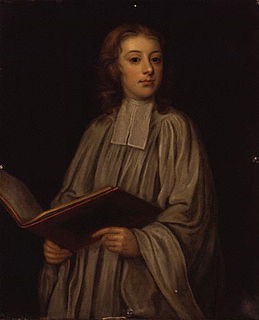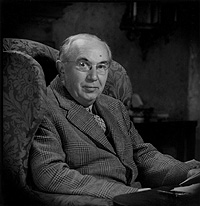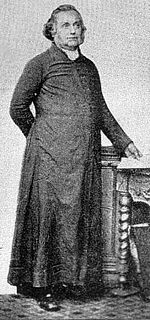Related Research Articles

Westminster Abbey, formally titled the Collegiate Church of Saint Peter at Westminster, is a large, mainly Gothic abbey church in the City of Westminster, London, England, just to the west of the Palace of Westminster. It is one of the United Kingdom's most notable religious buildings and the traditional place of coronation and burial site for English and, later, British monarchs. The building itself was a Benedictine monastic church until the monastery was dissolved in 1539. Between 1540 and 1556, the abbey had the status of a cathedral. Since 1560, the building is no longer an abbey or a cathedral, having instead the status of a Church of England "Royal Peculiar"—a church responsible directly to the sovereign.

Holyrood Abbey is a ruined abbey of the Canons Regular in Edinburgh, Scotland. The abbey was founded in 1128 by King David I. During the 15th century, the abbey guesthouse was developed into a royal residence, and after the Scottish Reformation the Palace of Holyroodhouse was expanded further. The abbey church was used as a parish church until the 17th century, and has been ruined since the 18th century. The remaining walls of the abbey lie adjacent to the palace, at the eastern end of Edinburgh's Royal Mile. The site of the abbey is protected as a scheduled monument.

The coronation of the British monarch is a ceremony in which the monarch of the United Kingdom is formally invested with regalia and crowned at Westminster Abbey. It corresponds to the coronations that formerly took place in other European monarchies, all of which have abandoned coronations in favour of inauguration or enthronement ceremonies.

Henry Fitzalan, 12th Earl of ArundelKG was an English nobleman, who over his long life assumed a prominent place at the court of all the later Tudor sovereigns, probably the only person to do so.
Owen Oglethorpe was an English academic and Roman Catholic Bishop of Carlisle, 1557–1559.
The Chapel Royal is an establishment in the Royal Household serving the spiritual needs of the sovereign of the British royal family. Historically it was a body of priests and singers that travelled with the monarch. The term is now also applied to the chapels within royal palaces, most notably at Hampton Court and St James's Palace, and other chapels within the Commonwealth designated as such by the monarch. Within the Church of England, some of these royal chapels may also be referred to as Royal Peculiars, an ecclesiastical jurisdiction of the monarch.
Thomas Tomkins was a Welsh-born composer of the late Tudor and early Stuart period. In addition to being one of the prominent members of the English Madrigal School, he was a skilled composer of keyboard and consort music, and the last member of the English virginalist school.

Manchester Cathedral, formally the Cathedral and Collegiate Church of St Mary, St Denys and St George, in Manchester, England, is the mother church of the Anglican Diocese of Manchester, seat of the Bishop of Manchester and the city's parish church. It is on Victoria Street in Manchester city centre.

William Croft was an English composer and organist.
Richard Farrant was an English composer. Like many composers of his day, the early years of Farrant's life are not well documented. The first acknowledgment of him is in a list of the Gentleman of the Chapel Royal in 1552. It is assumed from that list that his birth was around 1525, although that cannot be accurately determined. During his life he was able to establish himself as a successful composer, develop the English drama considerably, founded the first Blackfriars Theatre, and be the first to write verse-anthems. He married Anne Bower, daughter of Richard Bower who was Master of the Chapel Royal choristers at the time. With Anne he conceived ten children, one of whom was also named Richard.

Boris Ord, was a British organist and choirmaster of King's College, Cambridge (1929-1957). During World War II he served in the Royal Air Force. He is best known for his choral setting of Adam lay ybounden, his only published composition.

Thomas Attwood was an English composer and organist.
Hugh Curwen was an English ecclesiastic and statesman, who served as Archbishop of Dublin and Lord Chancellor of Ireland from 1555 to 1567, then as Bishop of Oxford until his death in November 1568.

Once in Royal David's City is a Christmas carol originally written as a poem by Cecil Frances Alexander. The carol was first published in 1848 in her hymnbook Hymns for Little Children. A year later, the English organist Henry John Gauntlett discovered the poem and set it to music.

The Choir of King's College, Cambridge is an English choir. It is considered one of today's most accomplished and renowned representatives of the great English choral tradition. It was created by King Henry VI, who founded King's College, Cambridge, in 1441, to provide daily singing in his Chapel, which remains the main task of the choir to this day.
Robert Parsons was an English composer of the Tudor period who was active during the reigns of King Edward VI, Queen Mary I and Queen Elizabeth I. He is noted for his compositions of church music.

Sir John Frederick Bridge was an English organist, composer, teacher and writer.
William Wickham (Wykeham) was an English bishop.

St. George's Chapel at Windsor Castle in England is a chapel built in high-medieval Gothic style. It is both a Royal Peculiar, a church under the direct jurisdiction of the monarch, and the Chapel of the Order of the Garter. It is located in the Lower Ward of the castle. St. George's castle chapel was originally founded in the 14th century by King Edward III and extensively enlarged in the late 15th century. It has been the scene of many royal services, weddings and burials. Windsor, England's premier castle, is the principal residence of the monarch.

Court music in Scotland is all music associated with the Royal Court of Scotland, between its origins in the tenth century, until its effective dissolution in the seventeenth and eighteenth centuries with the Union of Crowns 1603 and Acts of Union 1707.
References
- ↑ Roger Bowers (2014). "XII:Chapel and Choir, Liturgy and Music, 1444-1644". In Jean Michel Massing; Nicolette Zeeman (eds.). King's College Chapel 1515-2015. Harvey Miller Publishers. p. 263. ISBN 9781909400214.
- 1 2 3 David Lasocki (1998). A biographical dictionary of English court musicians, 1485-1714, Volumes I and II. ISBN 9781315097817.
. Dictionary of National Biography . London: Smith, Elder & Co. 1885–1900.
| This biography article of an English religious figure is a stub. You can help Wikipedia by expanding it. |